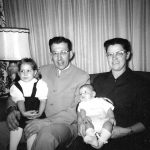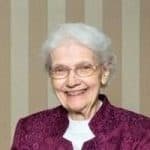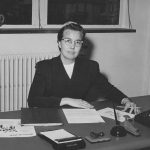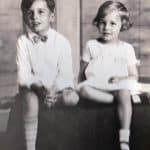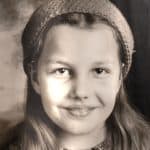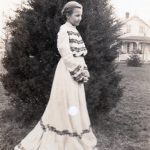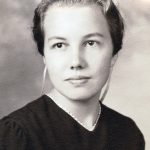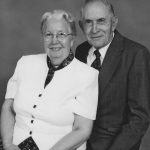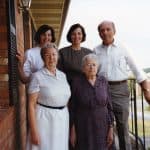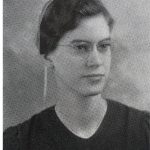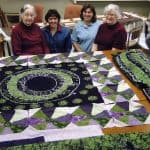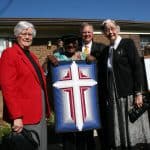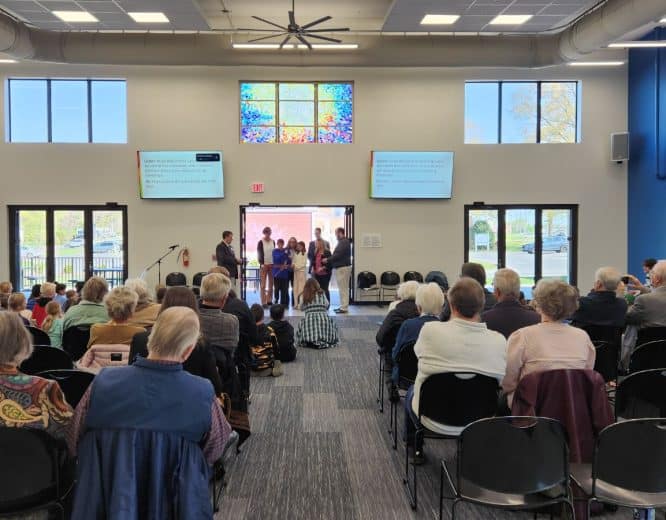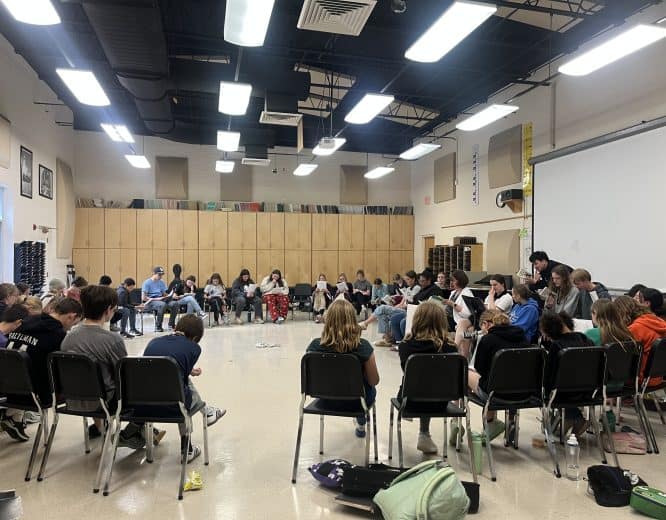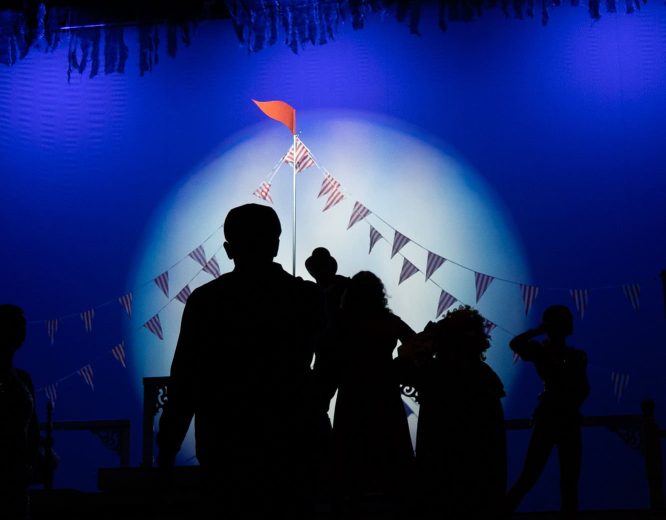Four Women’s Legacy Gifts Fund EMES Building
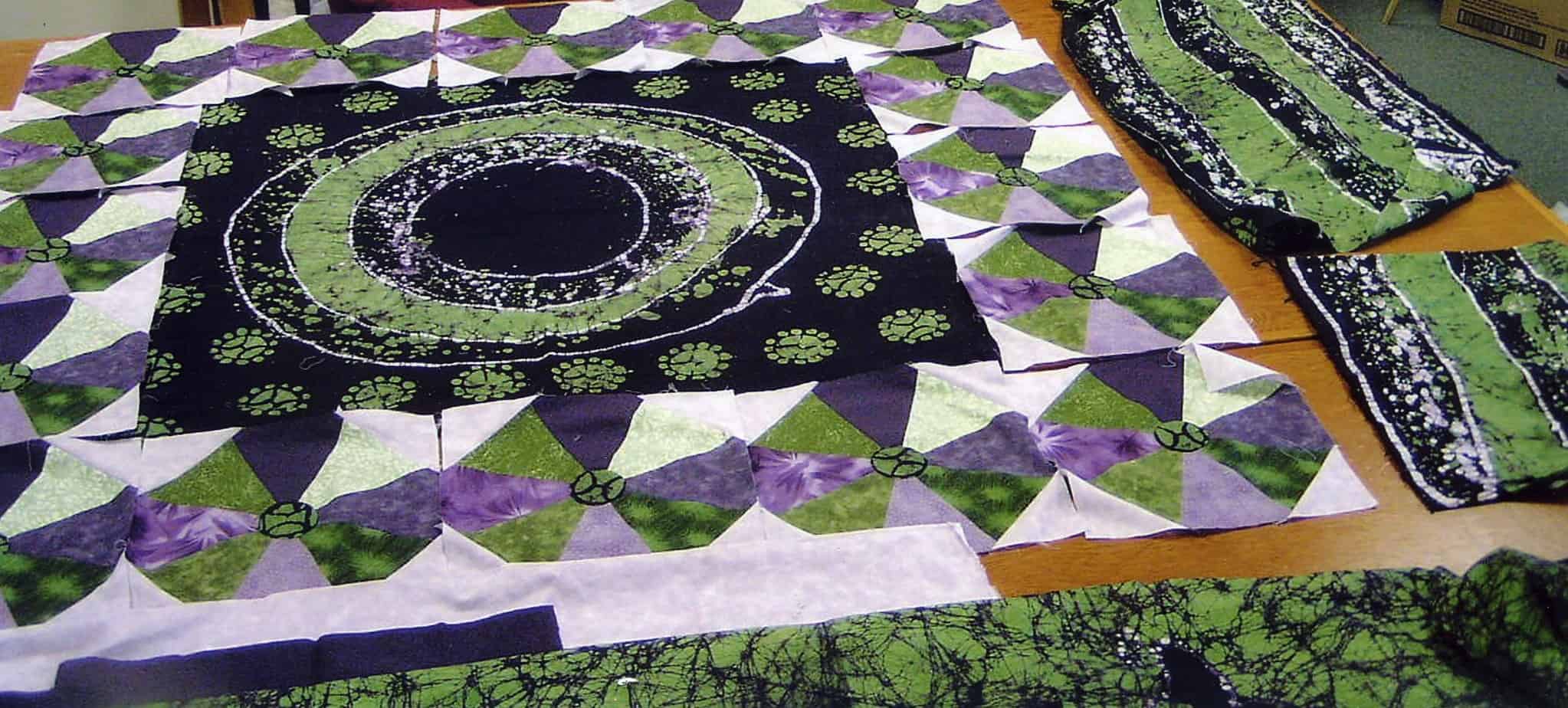
These are the stories of four Mennonite women who loved children and education, and who are having an impact at Eastern Mennonite School today and into the future. Each of them included EMS in their will. When they died, EMS received the bequests and worked with their families to identify the best use of these funds. Their combined gifts totaled $890,354 and ended up covering nearly one-quarter of the renovation costs of Eastern Mennonite Elementary School, a project completed in 2019.
Lena Yutzy Showalter, originally from Plain City, Ohio, married Norman Yutzy in 1955. Within a year, newlyweds Magdalena “Lena” Beachy (1931-2019) and Norman Yutzy moved into the Trissels Mennonite Church parsonage, Broadway, Virginia, where Norman served as pastor for many years. Lena shared her gift of hospitality with many as a pastor’s wife. She loved teaching Sunday school and often taught in the large Summer Bible School programs of Trissels Mennonite Church during the 1960s and 1970s. Lena was active in Mennonite Women, where she and others contributed their time and expertise to make quilts, comforters, and clothing for relief.
Lena hosted many in her Broadway farm home, where she and her family operated a dairy operation and raised turkeys. She was a wonderful hostess and provided delicious meals to many who came into her home, including this writer’s family.
Lena often gave her time to serve children and youth. With a two-year-old child in her home, Lena hosted a fresh-air child from the city during the summer of 1959, and the following year, Lena and two more families at Trissels hosted children at their rural Rockingham County homes. During the 1960s and ʼ70s, she and Norman served as youth group leaders at Trissels Mennonite Church.
Lena raised three children, Lenora (Rick) Bell; David (Jewel) Yutzy; and Charlene (Robert) Jacob. After Lena’s husband Norman Yutzy passed away in 2000, Lena married Omar Showalter in 2006, and the Showalters attended Lindale Mennonite Church. One of Lena’s grandsons, Aaron Yutzy, currently serves on the Eastern Mennonite School board of directors. Lena’s legacy is one of generosity, in giving herself to family, church, and school, in her desire to fulfill God’s call to serve others.
Helen Trumbo Shank graduated from Eastern Mennonite School with a high school degree in 1942. She earned a bachelor’s degree from Eastern Mennonite College in 1953. Despite coming from a relatively low-income family, Helen Trumbo Shank (1925-2020) made remarkable lifetime accomplishments as an editor, writer, and teacher. At her passing in 2020 at age 95, Helen left an estate that made significant bequests to Eastern Mennonite School and her home congregation of Zion Mennonite Church, Broadway, Va.
Helen worked at Mennonite Publishing House, Scottdale, Pa., 1945-1966, where she served as an assistant to Elrose Zook, editor, and edited Beams of Light, a publication for children. In 1958, she changed the name to Story Friends. This periodical was distributed nationally to most children in the Mennonite Church. She also worked as editor of Words of Cheer, a Mennonite publication for youth. While living in Scottdale, Helen was well known for her 1957 Chevy, in which she took friends on Sunday afternoon rides.
In the early 1940s, Helen taught in the Summer Bible School outreach program of the Northern District of the Virginia Mennonite Conference. One summer during World War II, Helen taught in five different Mennonite church Summer Bible School sessions, of two weeks each, requiring 10 weeks of her time. She was part of a wave of dozens of youth who taught and lived among the mountain churches where they taught Bible stories, often to underprivileged families. Helen visited homes in the afternoons and evenings, slept in a trailer or tent supplied by her home church, and she remembered that in one mountain home, at mealtime with three Mennonite teachers, “One got a spoon, one a fork, and one a knife.”
Helen kept a diary and provided interviews to former EMHS history teachers James Rush and this writer. Helen’s journal, her excellent memory, and her willingness to be interviewed contributed in significant ways to our understanding of the Mennonite mountain mission’s movement of the mid-twentieth century. In 1946, Helen co-authored an important and one-of-a-kind carefully researched paper on the numerous mission stations of the Mennonite Church in the highlands of western Virginia and the mountains of West Virginia.1
At age 43, Helen married Stuart Shank (1920-2018) in 1968. Helen taught nine years as a second-grade teacher in the Plains Elementary School and worked with Stuart on his Broadway farm.
In the 1980s, Helen wrote a second significant essay of historical significance. Stuart had served in Civilian Public Service as a conscientious objector during World War II. Helen wrote about Stuart’s story and 13 other men and four Mennonite women who served. Helen’s research paper is invaluable to researchers today.2
In later years, Helen welcomed interviewers to her room at the Virginia Mennonite Retirement Community who needed help with photos or inquiries about twentieth-century Mennonite history. She was a generous woman who lived a frugal life and accumulated financial savings.
Gladys Driver (class of ’38) and Brownie Driver (class of’46), sisters, lived their lives within a five-mile radius of Harrisonburg, Va., but their influence and impact have been global. Gladys Driver (1921-2017), seven years older than Brownie, worked for many years as an administrative assistant in the academic field at James Madison University. Brownie Driver (1928-2017), went on to become a registered radiologist. Growing up on a farm near the Weavers Mennonite Church, where they attended, the sisters learned to be frugal, sew, and quilt.
Both women served in various ways in church ministries over the years, but they excelled at piecing together quilts, comforters, and wall hangings, and teaching others to do the same. In quilting, a “piecemaker” gathers pieces of fabric and stitches them together to create something whole.3 The Driver women made quilts and comforters in their Harrisonburg home, and they supported the Weavers Sewing Circle in making quilts and comforters. They gathered colorful fabric that was just the right color, found bargains, and created beautiful works of art.
In 2005 Gladys and Brownie had encouraged Yvonne Martin to design and create an African quilt that was sold at the Virginia Mennonite Relief Sale for $4,100. Those who purchased the “African Kaleidoscope” quilt sent it to Africa.
In 2007 South African Nobel Peace Laureate, Archbishop Desmond Tutu visited Harrisonburg to receive the annual Gandhi award at James Madison University. Gladys and Brownie had made a 21″ by 31″ quilted wall hanging for the Virginia Relief Sale, but officers from Eastern Mennonite University purchased it before the sale as a gift to Bishop Tutu, with the funds going to the Relief Sale.
The Driver women then made a second identical “Log Cabin Cross” to donate to the Relief Sale, with the proceeds again helping the work of the Mennonite Central Committee. In 2013 Gladys and Brownie made another “Log Cabin Cross” that was framed and hung on the wall in the lobby of Weaver’s church for display.
Piecemakers, Gladys Driver and Brownie Driver created many quilts, comforters, and wall hangings that represent, in a unique way, the art, beauty, and community life of the Weavers church and Mennonite community of the Shenandoah Valley of Virginia during the twentieth and early twenty-first century.
Gladys and Brownie Driver gladly gave this writer two interviews in 2011, sharing historical photos and anecdotes of growing up in the Weavers Mennonite Church. While the Driver women remained local, they traveled widely across the United States, Canada, and other countries. Their impact on international relief was legendary at the Relief Sale, with 55 of their items selling in 10 years, 1995-2005, raising thousands of dollars for international relief and development work.
Gladys and Brownie both passed away in 2017, though their legacy of teaching others the art of piecework and sharing their abundance is a testament to their Kingdom values. Gladys and Brownie Driver always looked for bargains when buying fabrics for their artwork, and over many decades the women saved money and included Eastern Mennonite School in their wills. In so many ways, the influence of these two local Driver women will carry on for years to come.
1 Helen Trumbo and Ida Showalter, “History of Expansion of the Mennonite Church in Northern District of Virginia Conference” (Harrisonburg, Va.: Research Paper, Virginia Mennonite Conference Archives, 1946).
2 Helen T. Shank, “The Civilian Public Service Experience of Zion-Trissels Mennonite Church, 1941-1946,” (Harrisonburg, Va. Research Paper, Virginia Mennonite Conference Archives, 1985).
3 Gloria Y. Diener, People of Peace: Connecting Threads of Faith and Experience: Virginia Mennonite Conference, 175 Years, 1835-2010 (Harrisonburg, Va., 601 Parkwood Drive, Harrisonburg, VA 22802, Virginia Mennonite Conference, 2010), 4-5.
